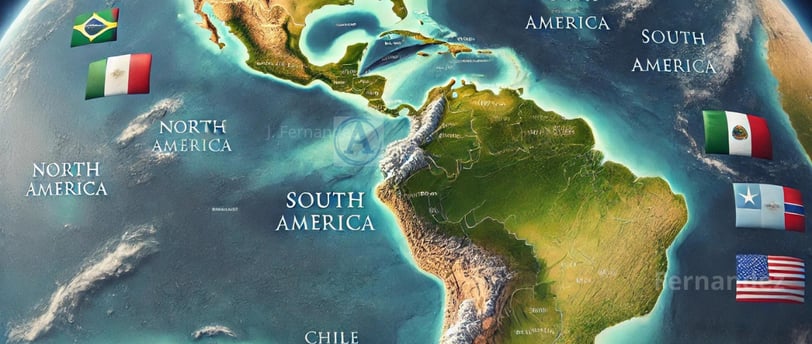The Pacific Alliance: Promoting Trade and Regional Integration in Latin America
Javier Fernández
10/5/20242 min lesen


The Pacific Alliance: Promoting Trade and Regional Integration in Latin America
The Pacific Alliance is an economic and political integration group that connects four Latin American countries: Mexico, Colombia, Peru, and Chile. It was founded in 2011 with the primary goal of promoting regional integration, boosting economic growth, and enhancing the competitiveness of member countries on a global level. Notably, it focuses on free trade, mobility of people, and dynamic trade relations with the Asia-Pacific region.
Goals of the Pacific Alliance
The Alliance was created to facilitate trade, improve mobility of people, and enhance competitiveness. Its main goals include:
Reduction of Trade Barriers: The member countries have removed 92% of tariffs among themselves, promoting the exchange of goods and services. The long-term aim is to make trade entirely tariff-free.
Integration of Financial Markets: The countries aim to unify their capital markets to make transnational investments more efficient. A key step was the creation of the Mercado Integrado Latinoamericano (MILA).
Facilitation of Mobility: Citizens of member countries can travel within the bloc without a visa, promoting tourism, job opportunities, and academic exchanges.
Diversification of Trade Partners: The Pacific Alliance has not only strengthened trade relations among its members but has also expanded its horizon toward Asian markets, particularly to countries like China, Japan, and South Korea.
Economic Influence
The Pacific Alliance stands out by bringing together open, market-oriented economies. Together, they represent nearly 40% of the GDP of Latin America and the Caribbean and account for over 50% of the region’s trade. Additionally, the over 230 million people in the member countries present an attractive market for foreign investments and multinational companies.
The export sector, especially for agricultural products, minerals, and manufactured goods, has greatly benefited. The members’ location on the Pacific Ocean makes them strategic gateways to the emerging Asian markets, which are increasingly important in global geopolitics and economics.
Challenges and Opportunities
Despite significant progress, the Pacific Alliance faces challenges. The differences in the size of the member economies and the dependence on primary sectors like mining and natural resources could limit long-term growth. Political instability in some member countries, such as leadership changes in Peru and Mexico, could also impact the continuation of shared policies.
However, the Alliance presents major opportunities. Technological integration, promotion of the green economy, and collaboration in innovation and entrepreneurship could further drive regional growth and establish this bloc as a leader in Latin America.
Conclusion
The Pacific Alliance has shown how cooperation between countries can foster economic growth and global competitiveness. With a clear focus on free trade and integration, this bloc has not only brought benefits to its member countries but has also positioned itself as a key platform for strengthening economic relations between Latin America and the dynamic Asia-Pacific market.
